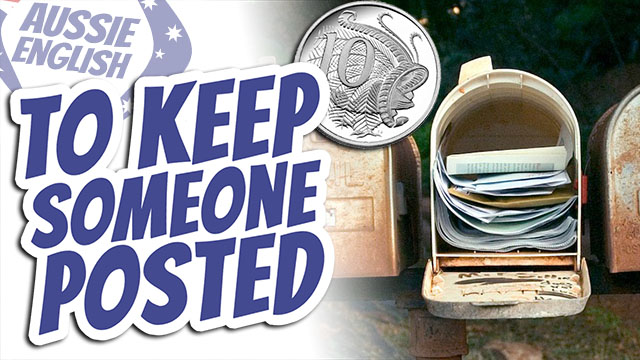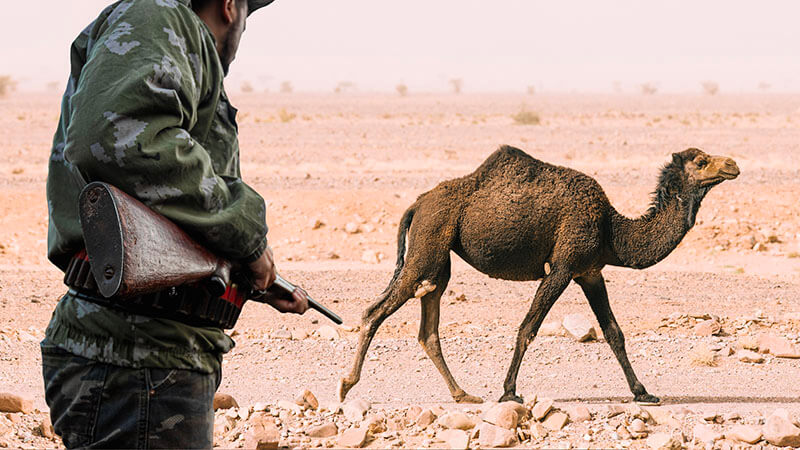Australia’s Emu Wars
In this episode of Aussie English I teach you a bit of Australian history by reading an article about the Australia’s Emu Wars from the Australian Geographic website.
Australia’s Emu Wars
Hey guys! Welcome to this episode of Aussie English. Today I wanted to read for you guys an article that I just stumbled upon, I just found this today as I was looking for some interesting stories about Australia. And this article is called “Looking Back: Australia’s Emu Wars” and you can find it on the Australian Geographic website, and I’ll link that to you in this episode and on Facebook as well.
Anyway, I thought I would just read this article for you because I found it incredibly interesting and it’s a little bit of culture, a little bit of Australian history that I wasn’t aware so I’m sure you guys won’t be aware of [it] either.
Alright, so…
In 1932 Australian troops were dumbfounded when they found themselves outmaneuvered by clever birds during the Emu Wars.
EARLY ON THE morning of 2 November 1932, the Seventh Heavy Battery of the Royal Australian Artillery alighted at Campion, WA, on to a hot red-dirt landscape about halfway between Perth and Kalgoorlie. There they unpacked two Lewis automatic machine guns and 10,000 rounds of ammunition.
The unit’s intention? To open hostilities with the emus of Western Australia that were moving in from central Australia in search of water and, having stumbled on the region’s delicious wheat districts, had begun to ravage crops.
No sooner had the unit arrived than a flock of 50 emus was sighted. The company’s commander, Major G.P.W. Meredith, immediately ordered his troops to circle the birds and chase them into range of the guns. By the day’s end only a dozen birds out of the thousands the men had shot at were dead. Nevertheless, first blood had been drawn in Australia’s ‘Emu Wars’.
It all came about late in 1932, after a marauding emu population of at least 20,000 had been devastating farms across WA for some time. The farmers under attack (many of them ex-soldiers themselves) had eventually petitioned for military aid from the Minister of Defence George Pearce. He deployed troops swiftly, and they arrived with hopes of quick victory and a few emu feathers for their hats.
No sooner had the conflict begun, however, than it became clear that the Australian military had vastly underestimated the emu. Cunning adversaries, the emus proved almost impossible to hit with machine-gun fire, and they seemed able to shrug off even serious injury from bullets without breaking stride.
Describing the emus, Major Meredith later said:
“If we had a military division with the bullet-carrying capacity of these birds it would face any army in the world… They can face machine guns with the invulnerability of tanks.”
A few days into operations, a planned ambush by a dam failed miserably when one of the Lewis guns jammed. A later attempt to mount a machine-gun on a truck fell apart when it was made apparent that the vehicle could not keep up with the birds.
Within a week of first contact the troops were recalled. Roughly 2500 rounds had been fired and killed somewhere between 50 and 200 emus. Meredith did note that his men had suffered no casualties. When the question was raised if a medal would be struck for the conflict, federal labor parliamentarian A.E. Green replied that any medals should go to the emus who had ‘won every round so far’. For his involvement in the deployment, Defence Minister George Pearce earned the unofficial title ‘Minister for the Emu War’.
Although a second (slightly) more successful military operation was mounted against the emus only a few days after the initial retreat in November 1932, in the end it was the instituting of a bounty on emus that proved most effective. Between 1945 and 1960 around 284,700 emus were killed in WA.
Australia’s emu population, however, remains stable to this day. Thankfully, they do not seem interested in resuming hostilities with the Australian government.
So, there you go guys. That was a little story from Australian Geographic about the Emu Wars in Australia that started in 1932. And so, obviously there is this big annual migration of emus that move from parts of Central Australia where it’s all dry, arid, desert country, and when it dries out there in the dry season the emus obviously move to the west into WA, into Western Australia, and look for greener pastures. They look for food to eat. They look for water. And so they move west, and in this period obviously there was a lot of wheat being grown in Western Australia. There may still be wheat growing there today. I don’t know that much about farming in Western Australia. But these emus had obviously stumbled across these massive farms with lots of wheat and were devastating the crops that would otherwise go towards these farmers’ livelihoods, that would be sold, that would feed people in Australia, etc. And so, obviously at the time the only means of defence against these emus, the odd 20,000+ emus that were devastating these farms, was to strangely enough use a machine gun to try and kill these birds, to try and cull them, to try and get rid of them. The ironic thing is that obviously in this first attempt at dealing with this plague of emus, with this [these*] 20,000+ emus, the army or the battalion, whatever the group of soldiers were that came out with these machine guns, these Lewis machine guns, they used 2,500 rounds and they only managed to kill 50 to 200 emus. So, they were very inefficient at actually using these machine guns to cull these poor emus that just wanted some food and water. And so, later on they obviously state that between the years 1945 and 1960 more than a quarter of a million emus were killed but it wasn’t by the army and the use of machine guns but instead by instituting some kind of bounty on emus. So, effectively, the Government paying people for emu carcasses or for evidence that emus had been killed. So, I think today in Australia there may be bounties on foxes, or at least there were in the past, where you could kill a fox on your farm, skin the fox, have the fox’s fur, take it to a location to show the Government or a government official and you would get a certain amount of money as a result. So, there was obviously an incentive for people to go out and get rid of these pest species whether it was the fox or the emu in this case, and obviously that was a lot more effective in the years between 1945 and 1960 than trying to mount a machine-gun on the back of a truck and chase these emus down and shoot them. And, I guess if you don’t already know, emus are Australia’s largest bird and they’re also a flightless bird. These guys have incredibly small vestigial wings. So, they’re small little wings that don’t actually get used for flight. And so, they’ve shrunk. And they can run incredibly quickly. So, they’re closely related to ostriches from Africa. So, they’re a ratite. That’s the kind of bird they are, a ratite. And they run incredibly quickly. I think Australian emus can run up to 60km/hr. So, yeah, incredibly fast. Obviously, at the time the people didn’t have trucks or cars that could keep up with these guys on uneven ground in farm country, etc. So, they were just very very difficult to track down and kill.
So, that’s today’s story guys. I hope you find it interesting. I hope it’s given you a bit of insight into, I guess, Australia’s quirkiness and a bit of our history. And yeah, I hope you enjoy the episode guys. All the best!
Here's what you get when you sign up!
- Read while you listen using the Premium Podcast player.
- Understand every word in every episode.
- Download all PDF transcripts and MP3s for 600+ episodes.
- Get access to bonus member-only episodes.












Responses